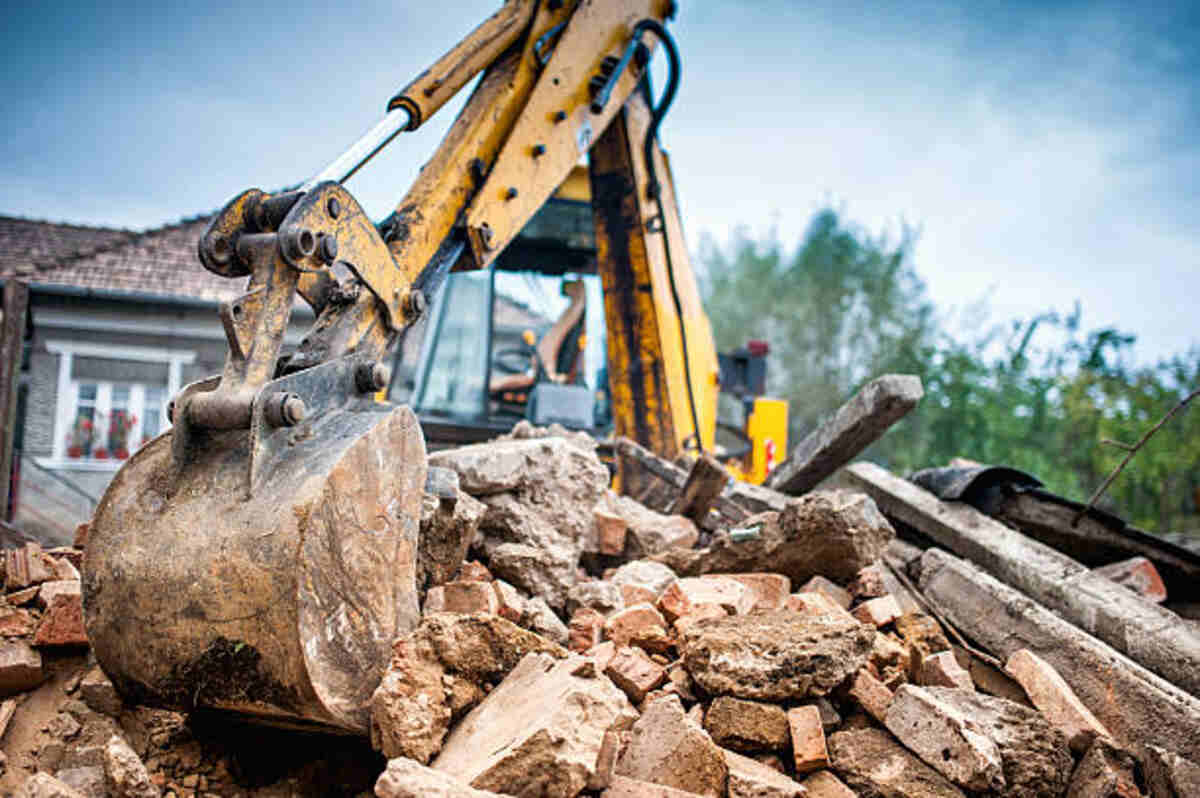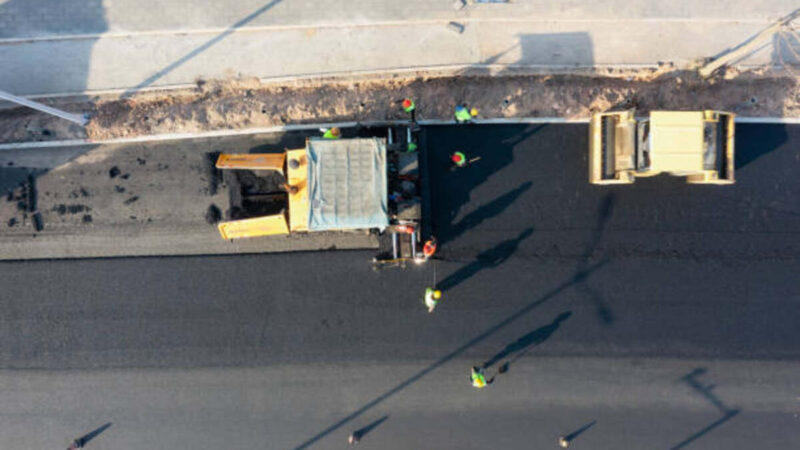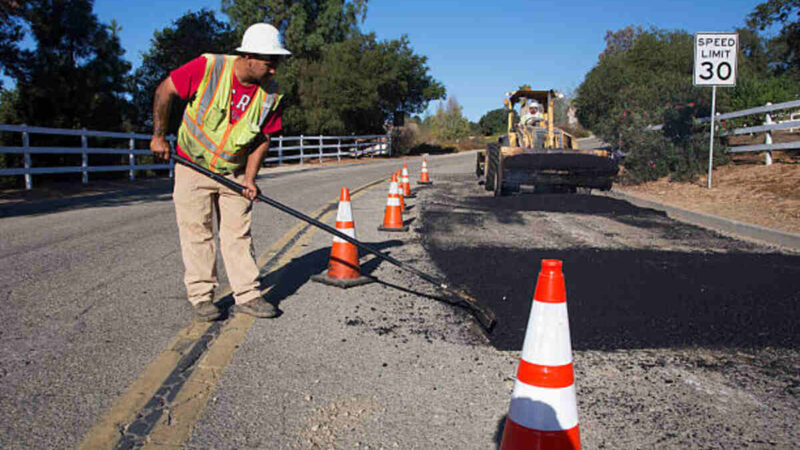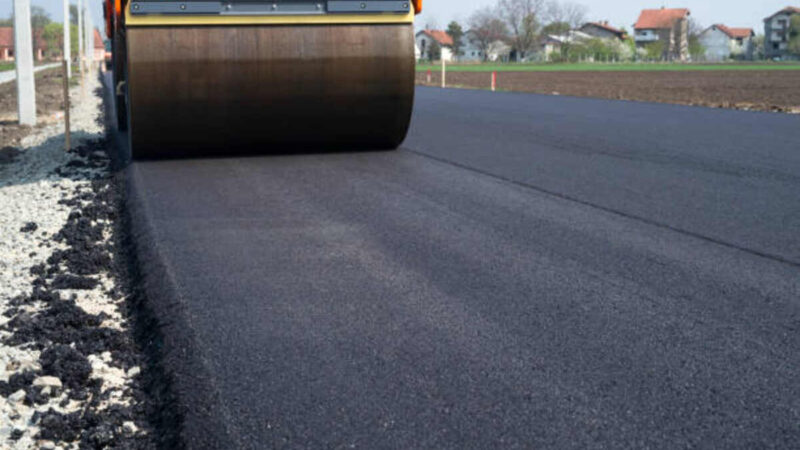Understanding the Demolition Process in Fremont

Hello, future novelists, content entrepreneurs, and grad students! Should you be here, you’re probably concerned about what goes down when a construction goes down-literally! We’re scuba diving into the nuts and products of the demolition process throughout Fremont. Whether you’re going on about demolition dust or just would like to know what the city’s checklist appears to be, you’ve come to the right place. Find the demolition Fremont.
What Exactly is Demolition?
Before we get into the nitty-gritty, let’s get started with the basics. Demolition is the technique of tearing down buildings or structures. It sounds simple, appropriate? But there’s a lot more to it than just swinging a destroying ball. In Fremont, as in many other places, demolition is really a carefully planned process, along with specific steps and safety precautions.
The Historical Context Associated with Demolition
Demolition isn’t just a modern-day necessity; it has historic roots. Understanding these origins can provide insights into the reason why certain methods are favored today. Back in ancient times, demolition was a labor-intensive process that required manpower and fundamental tools. Unlike today, security standards were minimal, as well as methods were often basic.
Modern-Day Techniques and Improvements
Fast forward to the present, and you will find a range of sophisticated demolition techniques. From explosives to high-reach excavators, technology has significantly improved the effectiveness and safety of demolition projects. Innovations such as automatic demolition machines are gathering popularity for their precision and capability to work in hazardous conditions. These advancements have made demolition not only faster but also more secure for both workers and the surrounding community.
Environmental Concerns in Demolition
Today’s demolition processes are heavily motivated by environmental considerations. Throughout Fremont, the focus is not just on tearing down buildings but also on minimizing environmental impact. This includes recycling materials, minimizing dust, and ensuring harmless disposal of hazardous chemicals. The integration of eco-friendly routines in demolition reflects an ever-growing awareness of sustainability and the significance of protecting our environment.
The City involving Fremont Demolition Checklist
You will be wondering, what does the City of Fremont require for a demolition venture? Here’s a quick rundown on the checklist you need to keep in mind:
1. Permits and Approvals
Firstly, you need to get the right to make it possible. The city requires you to get a demolition permit, which includes submitting plans that detail how the demolition will be conducted properly. This is crucial to ensure that everything’s up to code.
Understanding the Allow Application Process
The process of obtaining a demolition permit in Fremont is meticulous. People must provide detailed website plans, safety measures, and duration-bound timelines. Each application is analyzed by city officials to ensure all safety and ecological standards are met. This specific thorough examination helps prevent concerns during the demolition phase and also safeguards public interests.
Significance of Compliance
Compliance with regional regulations is not just a ritual; it’s a legal requirement. Disappointment to adhere to these regulations may result in hefty fines or even job shutdowns. Fremont emphasizes consent to protect community welfare, making sure demolitions are conducted as well as responsibly.
The Role connected with Public Hearings
Public term conseillé may be part of the approval practice for large-scale demolitions. These kinds of hearings allow community participants to express concerns or provide support for a project. They provide a clear appearance and allow the public to have a declare in developments that might have an impact on their neighborhoods.
2. Electricity Disconnections
Before any demolition can begin, all utilities, including water, gas, and energy, need to be safely disconnected. It will help prevent any hazardous scenarios during the demolition process.
Dexterity with Utility Companies
Disconnecting utilities requires careful dexterity with the relevant companies. This ensures that services are properly terminated and no accidental disconnections occur. Utility companies play a crucial role in credit reporting that all lines are sedentary before demolition begins, thus reducing the risks of crashes.
Safety Protocols in Disconnection
Safety protocols during electricity disconnection are stringent. Individuals must follow specific guidelines, avoiding incidents such as gas coolant leaks or electrical shocks. These kinds of protocols are designed to protect not only the demolition crew but also the surrounding community from likely hazards.
Timeline and Preparation
Scheduling utility disconnections can occasionally be a complex process. It involves complementing multiple companies and also aligning schedules to ensure regular disconnections. A well-planned period helps avoid delays and also keeps the demolition job on track.
3. Asbestos and Dangerous Material Inspection
Fremont will take safety seriously, which is why which mandatory inspections for asbestos friction material and other hazardous materials. When these are found, they need to be removed by professionals ahead of that demolition can proceed.
Discovering Hazardous Materials
Identifying unsafe materials is a critical step within the inspection process. Taught professionals conduct thorough examinations to detect substances, including asbestos, lead, and other toxic contamination. These assessments are critical for planning safe treatment procedures and preventing health conditions.
Safe Removal and Grasp
Once hazardous materials are identified, they must be correctly removed and disposed of as per regulatory standards. Specialized clubs handle these materials to guarantee they do not pose a risk during or after demolition. Appropriate disposal methods are employed to guard the environment and public health.
Legitimate and Health Implications
Disappointment to manage hazardous materials might have significant legal and health, and fitness implications. Noncompliance with basic safety regulations can result in legal steps and endanger the health of personnel and residents. Fremont enforces strict guidelines to prevent this sort of scenarios and promote a secure working environment.
4. Site Strategy and Safety Measures
A detailed website plan is necessary. This plan ought to outline the demolition technique and include safety measures to protect employees and the surrounding community. Security is paramount, and Fremont has strict guidelines to make sure everyone stays safe.
Creating a Comprehensive Site Plan
Making a site plan involves mapping out the demolition area. It requires a detailed overview of the whole process, including timelines, gear used, and personnel involved. A comprehensive site plan makes sure that every aspect of the demolition is actually accounted for, minimizing possible risks.
Implementing Safety Methods
Safety protocols are a foundation of any demolition task. These protocols cover everything from personal protective equipment (PPE) for workers to emergency response plans. Fremont’s recommendations ensure that all safety measures are generally implemented effectively to protect anyone involved.
Community Safety along with Awareness
Community safety can be a top priority during demolitions. Procedures such as setting up barriers, obvious signage, and public realises help keep the community informed along safe. Awareness campaigns, along with an open communication channel, should address any public problems promptly.
The Demolition Course of Action: Step-by-Step
Step 1: Pre-Demolition Arranging
Planning is key. Before just about any action is taken, an intensive plan is laid out. This calls for assessing the structure, deciding the best method for demolition, along setting a timeline.
Determining the Structure
The first step throughout pre-demolition planning involves the comprehensive assessment of the structure. Manufacturers and architects evaluate the building’s condition, materials, and strength integrity. This assessment will help determine the most suitable demolition process, whether it be implosion, mechanical, or manual.
Choosing the Right Demolition Process
Selecting the appropriate demolition technique is crucial for safety as well as efficiency. Factors such as the building’s location, size, and encircling environment influence this judgement. Experts consider these variables to decide on a method that minimizes the chance and maximizes effectiveness.
Time frame: Development and Coordination
Having a realistic timeline is a crucial part of planning. A well-coordinated timeline outlines each cycle of the demolition, from prep to cleanup. This means that all parties involved are on the same web page and that the project progresses easily.
Step 2: Setting Up the Site
Obstacles and signs are set upp upnd the site to keep illegal people out and ensure everybody knows about the demolition in progress. Security gear and equipment will also be checked and prepared.
Establishing Website Boundaries
Setting up site limitations is a critical safety calculation. Fencing and barriers are used during installation to prevent unauthorized access as well as protect bystanders. Noticeable boundaries ensure that only certified personnel are present within the demolition zone.
Signage and Conversation
Clear signage is essential with regard to communicating risks and directions to both workers and the auto industry. Signs indicating danger areas, entry points, and emergency exits aree strategically placed. Efficient communication ensures that everyone is educated and aware of their atmosphere.
Equipment Checks and Prep
Before demolition begins, most equipment undergoes rigorous investigations to ensure it is in the best working condition. Regular repair and pre-operation inspections aid in the prevention of equipment malfunctions. Proper prep of tools and machines is vital for a smooth along safe demolition process.
Step 3: The Tear-Down
This is where the genuine action happens! Depending on the framework, different methods might be utilized. For smaller buildings, guided demolition is efficient. Bigger structures often require mechanised demolition using excavators as well as bulldozers.
Manual vs Mechanised Demolition
The choice between guide and mechanical demolition depends upon several factors, including the building’s size and complexity. Guide demolition involves human work and basic tools, frequently used for small structures. Technical demolition, on the other hand, employs hefty machinery for larger plans, offering efficiency and acceleration.
Role of Technology in Demolition
Technology plays an important role in modern-day civilization. Advanced machinery and tools enhance precision and decrease labor-intensive tasks. Innovations like remote-controlled equipment and drones are increasingly used to improve safety and also accuracy during the tear-down period.
Addressing Unforeseen Challenges
Regardless of meticulous planning, unforeseen problems can arise during demolition. These may include structural shocks or equipment malfunctions. Knowledgeable teams are prepared to address these kikindsf ckchallengesomptly, ensuring that often project stays on track, additi in n to safety being maintained.
Step 4: Debris Removal and Site Cleanup
After the building needs to be cleared of debris. This involves explaining materials for recycling in addition to disposal. Fremont encourages naturally degradable practices, so recycling is often a big part of the cleanup.
Explaining and Recycling Materials
Trash removal begins with separating materials into recyclable in addition to nonrecyclable categories. Fremont advances recycling to minimize landfill waste material, encouraging the reuse regarding materials like metal, tangible, and wood. Efficient searching processes contribute to environmental resource efficiency efforts.
Disposal of Nonrecyclable Waste
Nonrecyclable waste will be disposed of by local restrictions. Safe disposal methods are applied to prevent environmental contamination. Appropriate waste management ensures that the particular demolition site is kept clean and free from harmful materials.
Ensuring Site Rescue
Site cleanup includes fixing the area to a saf,, in addition to an aesthsafeeaaestheticallyndition. This will likely involve leveling the ground, sugar plantation grass, or preparing the positioning for future construction. Website restoration is an important step in final the demolition process.
Step 5: Final Inspection
The moment everything is cleared, a last inspection ensures that the site is secure and all demolition work is over according to the city’s standards. Simply, then, is the project basic.
Conducting the Final Assessment
The final inspection is a thorough review of the demolition wewebwebsiteuringhall basiccsic safeprotocolslss have been followed and the site is free from problems. This ensures that the area is secure for future use or maybe development.
Verifying Compliance using Regulations
Inspectors also pay attention to compliance with all relevant rules and permits. This confirmation process confirms that the demolition was conducted by lawful standards. Any discrepancies tend to be addressed promptly to avoid upcoming legal issues.
Official Closure as well as Documentation
Once the inspection is complete, the project is officially closed. Documentation from the entire process is created and filed for future reference. This documentation is a record of compliance and is useful for future projects or maybe legal inquiries.
Dealing with Demolition Dust in Fremont
We have it; demolition dust might be a nuisance. If you’re living or maybe working near a demolition site, you might have some grievances. Here’s how the city can dust and what you can do:
Normal water spraying
Demolition teams generally use water sprays to prevent dust from becoming airborne. If you notice excessive dust, it is worth checking if normal water spraying is being used effectively.
How Water Spraying Functions
Water spraying involves utilizing hoses or sprinkler techniques to dampen dust particles. This technique effectively prevents dust from becoming airborne and spreading to nearby areas. The use of water is adjusted depending on weather conditions and the scale associated with demolition activities.
Monitoring Dirt Levels
Regular monitoring associated with dust levels ensures that drinking water spraying is effective. Demolition groups use instruments to gauge airborne dust and alter spraying techniques accordingly. This kind of proactive approach helps keep air quality and minimizes health hazards.
Innovations in Dust Command
Innovations in dust command technology are continually appearing. These include advanced misting methods and chemical suppressants in total dust management. Fremont encourages the adoption of innovations to improve air quality all-around demolition sites.
Community Interaction
The city encourages demolition businesses to keep communication open with nearby residents. If dirt is bothering you, please reach out to the project office manager or the city’s department dealing with the demolition.
Importance of Opening Up Dialogue
Open communication among demolition teams and the local community fosters trust and co-operation. Residents are kept educated about project timelines, possible disruptions, and safety measures. This kind of transparency helps alleviate problems and ensures that community hobbies are considered.
Channels for Comments and Concerns
Fremont supplies multiple channels for locals to express feedback and issues. These include hotlines, emailing colleagues, and public meetings. Quick responses to community questions demonstrate a commitment to dealing with issues and maintaining great relations.
Educating the Community
Schooling initiatives help the community be aware of the demolition process and dust management measures. Informative brochures, online language resources, and workshops provide useful insights. Educated residents are generally better equipped to engage using demolidemolition tooateateatee for their needs.
Personal Precautions
Should you be sensitive to dust, look at keeping windows closed through demolition hours and using electronic home air cleaners indoors. Wearing masks outdoors can also help minimize aspiration of dust particles.
Indoor Air Quality of Air Management
Managing indoor quality of air quality involves simple measures such as closing windows and using home air cleaners. These actions help prevent dirt from infiltrating homes as well as workplaces. Regularly changing air flow filters also contributes to sustaining a clean indoor atmosphere.
Personal Protective Equipment
Putting on masks or respirators could significantly reduce dust aspiration when outdoors. Choosing the right sort of mask, such as those graded for dust filtration, is crucial for effective protection. PPE offers a practical solution for those sensitive to airborne debris.
Creating a Dust-Free Zone
Building a dust-free zone as part of your home can enhance ease and comfort during demolition. Designating precise areas as dust-free, along with regularly cleaning surfaces, helps maintain a healthy living space. These types of proactive steps empower inhabitants to manage their exposure to demolition dust.
Conclusion
Understanding the demolition process in Fremont is not only about knowing how a structure comes down, but also about knowing the safety, environmental, and local community considerations involved. Whether you’re aspiring to craft a gripping novel, create persuasive content, or ace which academic paper, breaking down elaborate processes typically offers fresh insights into the best way to tackle any big undertaking.
So next time you ignore a demolition site, you will still know exactly what’s happening guiding those barriers. And who knows, maybe you’ll find some enthusiasm for your next big writing undertaking!
Remember, whether you’re carrying down buildings or creating stories, planning, precision, and patience are key. Today, go out there and demolish those writing goals similar to a pro!







